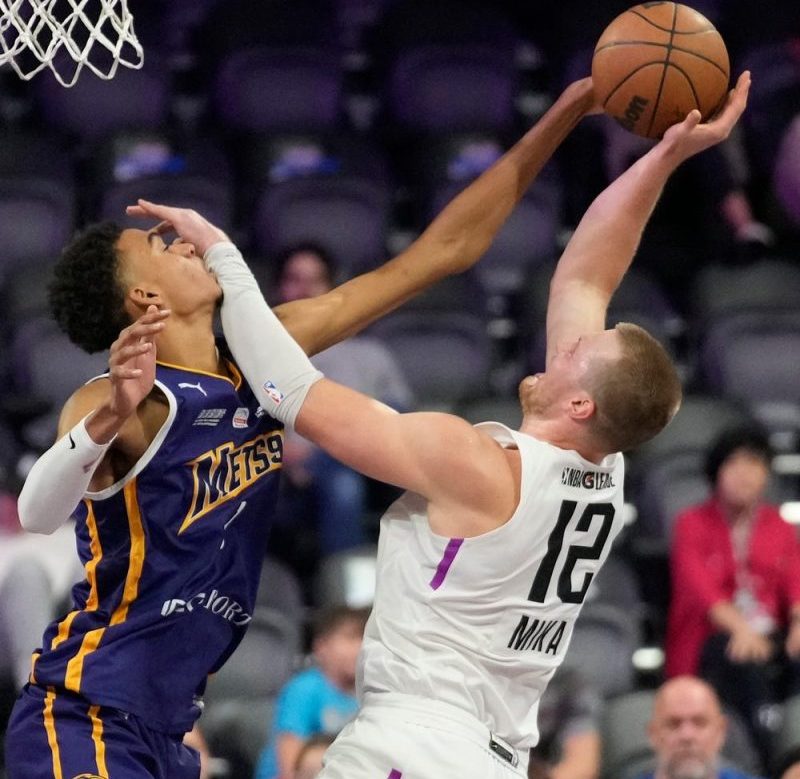
LeBron’s Lakers are struggling and their future isn’t bright. What gives?
The Los Angeles Lakers are bad. Or in the pointed words of TNT’s Charles Barkley, ‘The Lakers sucked yesterday, and they sucked again today.’
And it may be that way for the next several tomorrows – perhaps for the rest of the season, which would be trying times for LeBron James, the Lakers and their passionate fanbase.
The Lakers remain winless after four games, and while they won’t go 0-82, it’s difficult to forecast automatic wins, especially with their upcoming schedule: at Minnesota on Friday, vs. Denver, vs. New Orleans, vs. Utah, vs. Cleveland, at Utah, vs. Los Angeles Clippers.
Let’s take a look at the issues facing the Lakers, including why tanking doesn’t help them in the 2023 draft:
Offensive woes
The Lakers score 96.9 points per 100 possessions, which is last in the league by 3.1 points. It is a historically bad offense. The 2015-16 Philadelphia 76ers, which started the season 1-30, had an offensive rating of 98.4, and the 2011-12 Charlotte Bobcats had an offensive rating of 94.4.
The Lakers have the worst 3-point shooting percentage in the league at 22.3, which is the worst percentage through four games in NBA history. It shouldn’t be that bad all season, but the Lakers were 22nd in 3-point shooting percentage last season and didn’t get any better in that area in the offseason.
No team has shot under 30% from 3 for a season in the past decade, and the 2011-12 Bobcats and the 2002-03 Denver Nuggets are the only teams in the past two decades to shoot lower than 30% from 3. LeBron James has twice in four losses bemoaned the Lakers’ shooting, including the “We can’t shoot a penny in the ocean.”
Their terrible 3-point shooting has also sunk the Lakers to 29th in overall field goal percentage at 41.6%. They are shooting 54.5% inside the 3-point line which is a respectable 11th-best, but a team needs to hit 3s in this era.
Tanking not possible
With this start and knowing the offensive struggles the Lakers will have this season, why not join the race for the No. 1 pick and the chance to draft France wunderkind Victor Wembanyama? Well, the New Orleans Pelicans control the Lakers’ next three first-round draft picks from the Anthony Davis trade that helped the Lakers win the 2020 championship.
In the 2023 draft, the Pelicans can swap first-round picks with the Lakers. If the Lakers end up with a better (and possibly a lottery) pick, the Pelicans (unless a deal with devil has been made) will take it. In the 2024 draft, the Pelicans have the choice to take the Lakers’ first-round pick or push it back to 2025.
Plans for the future
The Lakers explored trades in the offseason, including right up until the start of training camp. But two guiding principles influenced the Lakers. As USA TODAY Sports reported in the summer, the Lakers don’t want to take on salary beyond the 2022-23 season, and regardless if they took salary beyond this season, the deal had to be game-changer especially if they were giving up future first-round picks, which they wanted to retain. Nothing materialized, and the Lakers held on to future first-round picks.
They are trying to capitalize on the last of James’ great seasons while planning a future without him.
The Lakers could have close to $50 million salary cap space in the offseason to build a quality roster for 2023-24. Lakers vice president of basketball operations and GM Rob Pelinka built a championship team in 2019-20 but also has rosters that failed to make the playoffs in 2019 and 2022.
How LeBron James’ extension fits into this
In James’ first season with the Lakers, he said, “You probably don’t want to be around me when my patience runs out.” His patience will be tested again this season. But in the offseason and after discussions with Lakers leadership, James signed a two-year, $97.1 million extension through 2024-25. (As an aside, Bronny James is draft-eligible in 2024, and James has a player option for that final season in 2024-25 so he could be a free agent at the same time his son is eligible to join the league.)
If you believe James has incredible basketball acumen (we can all agree on that, can’t we?), he had to have known this year’s team couldn’t compete with the elite in the West. He must believe in the vision the Lakers have for the following two seasons and believe that he will still be an All-NBA caliber player at 39 and 40 years old and help the Lakers contend for a title.
Not all Russell Westbrook’s fault
Russell Westbrook has not been good. He averages 10.3 points on 28.9% shooting from the field and 8.3% on 3s. But Westbrook isn’t the scapegoat for all of the Lakers’ issues. Per NBA.com stats, the Lakers are actually worse offensively with Westbrook on the bench and just slightly better defensively when he’s not in the game.
Anthony Davis, even at 24 points and 9.5 rebounds per game and 52.7% shooting from the field, has a worse net rating (minus-10, meaning outscored by 10 points per 100 possessions when he’s on the court) than Westbrook (minus-6.6).
Bright spot?
The Lakers are fourth in defensive rating, allowing 104 points per 100 possessions. That’s a sign first-year Coach Darvin Ham has installed a sound defensive scheme and that players are trying on that end.
Even in a league where defense matters, a team still needs to score.
Follow NBA reporter Jeff Zillgitt on Twitter @JeffZillgitt
